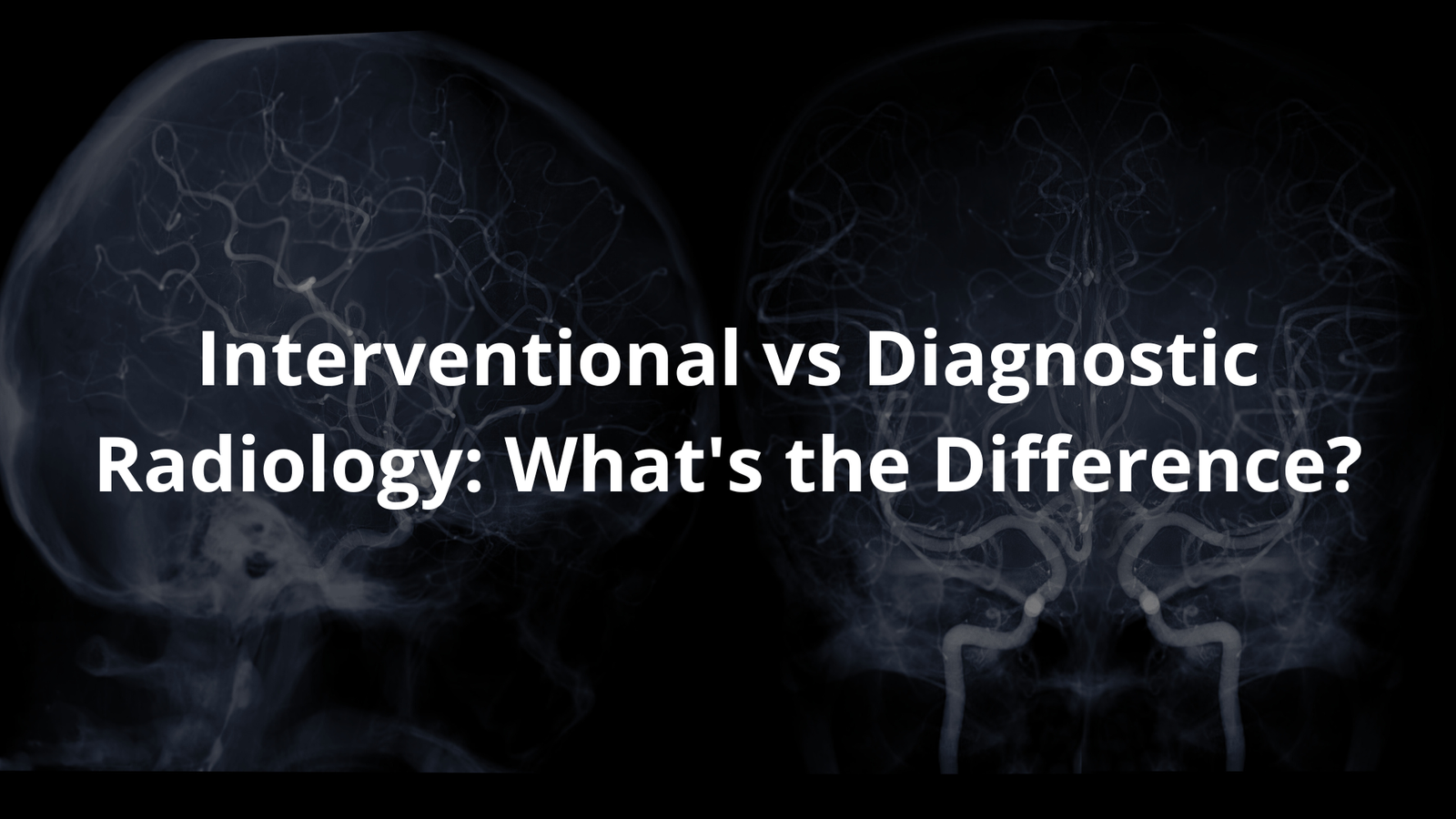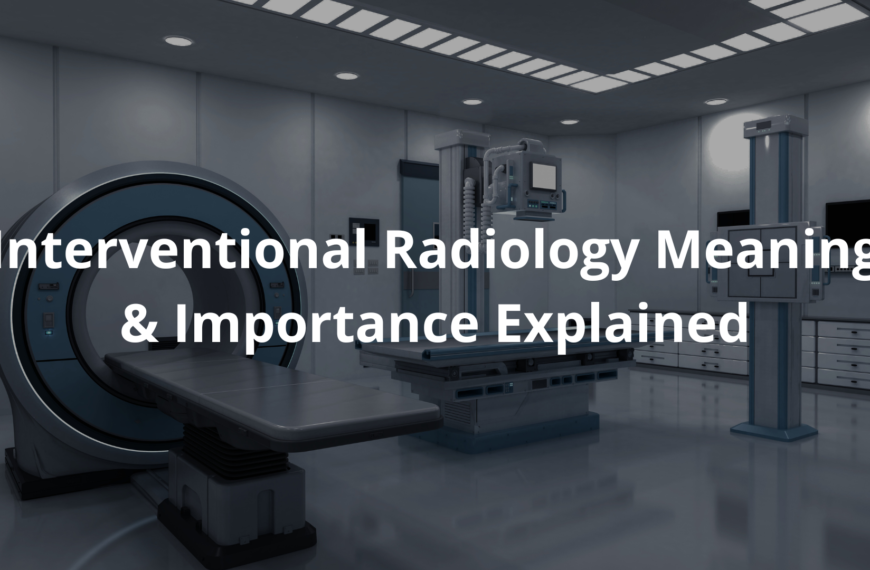Find out the key differences between interventional and diagnostic radiology, and how they each help patients.
Walking through the quiet halls of a hospital, one might overhear doctors discussing “interventional” and “diagnostic” radiology. These aren’t just fancy words—they’re lifelines for patients.
Diagnostic radiology is like a detective, finding clues inside the body (think X-rays or MRIs). Interventional radiology, on the other hand, steps in to fix problems, often with tiny tools and no big surgeries. Together, they’re a team, working to uncover and solve medical mysteries. It’s not just science; it’s deeply human, helping people heal.
Curious about how these two fields work hand in hand? Keep reading to explore their unique roles in healthcare.
Key Takeaways
- Diagnostic radiology helps doctors see inside the body to find out what’s wrong.
- Interventional radiology uses imaging to guide treatments that are less invasive than surgery.
- Both fields are important for improving patient care and can lead to faster recovery times.
Understanding Diagnostic Radiology
Diagnostic radiology is like having a special camera that can see inside the human body. It lets doctors figure out what’s going on without needing to cut anyone open. Using different imaging methods, they can make clear pictures of bones, soft tissues, and even blood vessels. This is super helpful because spotting a problem early often means better chances of fixing it.
The tools used in diagnostic radiology are pretty fascinating. They include:
- X-rays: Quick and simple. Perfect for checking bones to see if they’re broken.
- CT scans: Stands for computed tomography. It’s like stacking a bunch of X-ray images to get a 3D picture of what’s inside.
- MRI: Magnetic resonance imaging uses magnets and radio waves to show detailed images of soft tissues like muscles and organs.
- Ultrasound: Uses sound waves to look at things like organs or even babies during pregnancy.
- Nuclear medicine: Involves tiny amounts of radioactive material to see how organs are working.
Diagnostic radiologists are the experts who read these images. They’re like detectives, figuring out what’s happening inside a patient’s body and sharing that info with other doctors. It’s a team effort. [1]
I remember when a mate of mine broke his arm falling off his bike. The X-ray showed a small fracture that wasn’t obvious just by looking at his arm. Thanks to that, he got the right treatment straight away, and his arm healed just fine. Without that X-ray, it might’ve been missed.
What About Interventional Radiology?
Interventional radiology (IR) is like taking diagnostic radiology one step further. Instead of just finding problems, it’s about fixing them. Imagine a doctor being able to treat something inside your body without needing to make a big cut. That’s what IR does. Using imaging tools like CT scans or ultrasounds, doctors can guide their hands while they work.
Some common interventional radiology procedures include:
- Biopsies: Taking a tiny bit of tissue to check if it’s healthy or not.
- Stent placements: Inserting a small tube to keep blood vessels open, especially if they’re blocked.
- Angioplasty: Using a balloon to open up blocked blood vessels, often for heart problems.
- Tumour ablation: Destroying tumours with heat or cold, which can treat certain cancers without surgery.
Interventional radiologists often work closely with other specialists to create treatment plans. What’s great about IR is that it usually means less pain and a quicker recovery compared to traditional surgery. [2]
I think back to when my aunt had a blocked artery in her leg. Instead of going through a long surgery, she had an angioplasty. The doctor used imaging to guide a tiny balloon through her blood vessels to clear the blockage. She was walking again in no time, which was amazing to see.
Key Differences Between the Two
Here’s a quick comparison of diagnostic and interventional radiology:
| Aspect | Diagnostic Radiology | Interventional Radiology |
|---|---|---|
| What They Do | Find out what’s wrong | Treat known problems |
| How They Do It | Non-invasive imaging | Minimally invasive procedures |
| Common Procedures | X-rays, CT scans, MRIs | Biopsies, stent placements, angioplasty |
| Setting | Usually in radiology clinics | Specialized hospitals or clinics |
Both are crucial in healthcare, but they serve different purposes. Together, they make a strong team for diagnosing and treating patients.
Training and Standards
Becoming a radiologist takes years of hard work. In Australia, the Royal Australian and New Zealand College of Radiologists (RANZCR) sets the standards for training. Radiologists need to learn about imaging techniques, patient care, and safety. Interventional radiologists go even further, training to perform procedures safely and effectively.
It’s a big responsibility. These doctors need to know how to use complex machines and interpret images correctly. It’s not just about pressing buttons—it’s about understanding what those images mean for a patient’s health.
I’d compare it to being an artist (though I’m no artist myself). You need to know your tools and understand what you’re creating. For radiologists, their “art” is the health and well-being of their patients. That’s why their training is so important.
Why Are These Fields Important?

Having both diagnostic and interventional radiology makes a big difference in patient care. Diagnostic imaging helps find problems, while interventional procedures can treat those problems without major surgery. This can lead to:
- Faster recovery times: Less invasive procedures mean patients can go home sooner.
- Better quality of life: Treating issues quickly helps people get back to their normal lives.
Radiology gives doctors the tools to create treatment plans tailored to each patient. It’s incredible how these technologies have changed medicine. I think about all the people who’ve been able to return to their families, their jobs, or even just their hobbies because of these advancements.
In my opinion, the partnership between diagnostic and interventional radiology is essential. They work together to make sure patients get the best care possible. If you ever find yourself needing one of these services, you’ll know there’s a team of skilled specialists ready to help
FAQ
What’s the different way doctors use medical pictures?
Diagnostic radiology takes pictures of what’s inside your body to find out what’s wrong, while interventional radiology uses these pictures like a map to do treatments without big cuts. Both use advanced imaging and medical imaging technology, but they help patients in different ways.
How long does it take to get better after treatment?
When you get ir procedures, you usually feel better much faster than after open surgery. Recovery time is shorter because these guided procedures only need tiny cuts. This means you can get back to doing things you love more quickly than with traditional surgical procedures, which really helps your quality of life.
What kinds of special cameras do doctors use to see inside your body?
Doctors use lots of different imaging technologies to see inside you. They use magnetic resonance imaging (like a big camera that uses magnets), computed tomography (special x-rays), ray imaging, and nuclear medicine. These tools help create detailed images of internal structures to find out what’s making you feel unwell.
Do patients see their doctors the same way in both types of radiology?
Patient contact is different in each type. Interventional radiologists spend more time with patients because they both find problems and treat them. While diagnostic radiology also involves patient interaction during picture-taking, ir physicians work with their patients throughout the whole treatment plan.
What kind of school do doctors need for these jobs?
All these doctors start with medical school and radiology training. After learning clinical radiology, they pick either diagnostic or therapeutic radiology. The radiology therapeutic path needs extra practice in guided procedures to treat medical conditions.
How are computers making doctors’ jobs easier?
Artificial intelligence helps both kinds of radiology. It helps doctors look at images of the body faster when they’re trying to find problems. For doctors who do treatments, AI makes their treatment options more accurate when they treat various conditions.
What kinds of health problems can each type of doctor help with?
Both types help with a range of diseases and medical conditions. The difference between diagnostic radiology vs interventional radiology is mainly about treatment. Diagnostic doctors find the problems, while interventional radiologists can diagnose and treat conditions using small tools and pictures to guide them.
What makes radiation therapy different from other treatments?
Radiation therapy, which is part of radiation oncology, is different from interventional procedures because it uses special beams to treat sick areas. Both fields of medicine need careful planning and imaging technology, but they help fix different ranges of conditions. While radiation therapy targets specific spots, image guidance helps doctors do precise work inside your body.
Wrap Up
Interventional and diagnostic radiology are like two mates working together in healthcare. Diagnostic radiology finds the problem (like using X-rays or MRIs), while interventional radiology treats it with minimally invasive procedures.
They’re both crucial for helping patients get better, often without the need for major surgery. It’s pretty amazing how these fields keep advancing. So, next time you hear about them, you’ll know—they’re making a real difference in how we fight diseases.
References
- https://www.irefer.org.au/why-irefer/about-irefer
- https://irsa.com.au/what-is-interventional-radiology/




